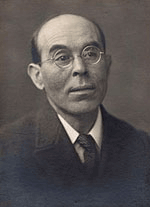





 Men and Memories - Faber & Faber, Londres
Men and Memories - Faber & Faber, Londres
Rothenstein, William
1931
p.85 – "In spite of his constant reference to the stupidity of the English and the intelligence of the French, I doubt whether Whistler’s work was so well understood in Paris as it was in London. It was rather the cosmopolitan painters – Boldini, Gandara, Helleu, Tissot, Jacques Blanche – who knew and understood him and his work."
p.95 – "Being rich and a Count as well, he [Montesquiou] knew everyone and went everywhere. He advertised the talents of Helleu and Gandara, and blew a loud trumpet for Whistler."
p.107-108 – "The very young are suspicious of artists who frequent fashionable circles; in this, they are often unjust, for the refinements of life need interpreting also, and men with the talent and taste of Helleu and Gandara are not often available. (…)
Another painter, Antonio de la Gandara, whom I thought a more serious artist than Helleu, was also much in request as a portrait painter. He showed a painting of his wife walking in a wood, an effect of sous bois, at the Salon, which seemed to promise a new kind of beauty. I was likewise attracted by his drawings, which for a time strongly influenced my own. Whistler, also, thought them interesting, and he sat to Gandara. Whistler promised that I too should make a drawing of him, both in Paris and, later, in London.
Both Helleu and Gandara were ardent supporters of Whistler, and were often at the rue du Bac. While Helleu collected eighteenth-century furniture, Gandara was an amateur of the Empire period. His studio, with its grey walls and lemon panelling, was furnished with a few severe pieces of Empire furniture, which he introduced into his portraits. He was painting the Princesse de Chimay, an American lady, in a white Empire dress of the finest transparent muslin; beside Gandara, with his dark complexion and coal-black hair and moustache, she looked dazzlingly radiant; and later, when I saw the Goyas in Madrid, I thought again of the two figures, one so fair, the other so dark, in the pale grey studio."
p.159 – "(…) round a room at the top of his house, he [Goncourt] had glass-topped tables where he kept presentation copies of books from his friends bound in vellum, with their author’s portraits painted on the covers; Zola by Raffaëlli, Montesquiou by Gandara, (…)"
p.190 – "(…) I was used to hearing both Whistler and Degas speak disparagingly of Sargent’s work; even Helleu, Boldini and Gandara regarded him more as a brilliant executant than as an artist of high rank."
RETOUR A « CRITIQUES »